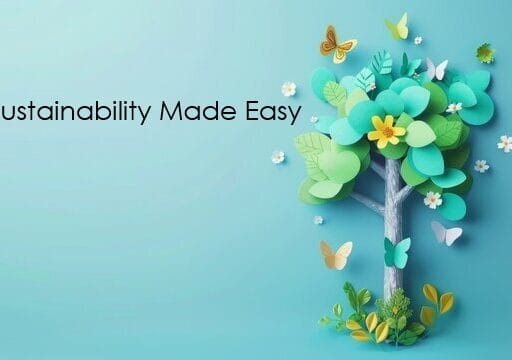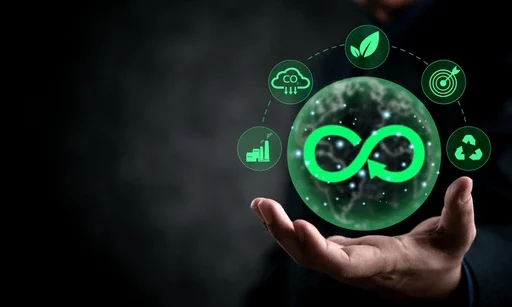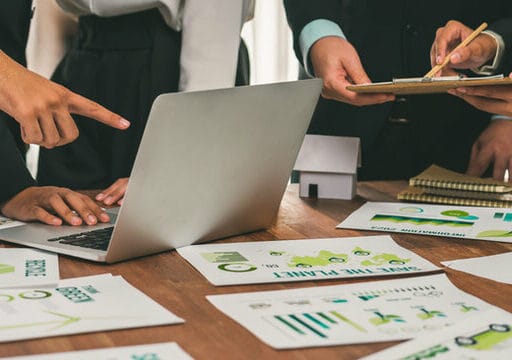Partnership for the Goals, or SDG Goal 17, highlights how important cooperation is to reaching the Sustainable Development Goals (SDGs) of the UN. In order to handle complex global issues, this objective emphasizes the significance of international collaborations, resource mobilization, technological transfer, and policy coherence. SDG Goal 17 aims to build a sustainable, prosperous, and inclusive future by encouraging collaborations between governments, the commercial sector, civil society, and international organizations.
The main facets of SDG Goal 17 will be covered in this blog, including its significance, funding sources, technology transfer, and capacity-building programs. We’ll also highlight how partnerships may promote global sustainable development through case studies and insights on cross-border cooperation.
The Importance of SDG Goal 17 and Global Partnerships
SDG Goal 17 is essential since the 2030 Agenda for Sustainable Development depends on everyone working together. Problems like poverty, inequality, and climate change cannot be solved by one country alone. International collaborations offer a venue for combining assets, know-how, and experience, guaranteeing inclusive and cooperative efforts.
Successful collaborations enable nations to close the divide between developed and underdeveloped areas. Initiatives like South-South and North-South collaboration are essential for exchanging financial resources, technological know-how, and best practices. By ensuring that no one is left behind, these collaborations create an atmosphere in which all nations can actively support and profit from sustainable development. SDG Goal 17 ensures policy coherence and the alignment of national efforts with global objectives by fostering synergies among stakeholders through the strengthening of global partnerships. Addressing underlying issues and making long-term, inclusive growth require this integrated strategy.
Financing for Sustainable Development and Strengthening Domestic Resource Mobilization
Strong financial mechanisms that support sustainable development activities are necessary to achieve SDG Goal 17. Official development aid (ODA), foreign investments, and local resource mobilization are all components of financing for sustainable development. Especially in poor countries, these financial resources support healthcare, education, infrastructure, and renewable energy projects.
To ensure long-term sustainability, domestic resource mobilization must be strengthened. The implementation of open economic policies, the improvement of tax systems, and the fight against corruption are all promoted. Countries may develop robust economies and lessen their dependency on foreign help by effectively managing their resources.
Additionally, international financial institutions are essential in helping emerging countries. Through creative finance techniques and debt sustainability measures, these nations may obtain the capital required for game-changing initiatives without jeopardizing their economic stability.
Capacity-Building, Technology Transfer, and Bridging the Digital Divide
A key component of SDG Goal 17, capacity-building aims to enable countries to carry out sustainable development plans. This entails fortifying governing systems, building human capital, and improving institutional frameworks. Countries may solve local issues and advance global development by encouraging the exchange of information and the development of skills.
Another crucial component of SDG Goal 17 is technology transfer. Progress in fields like renewable energy, healthcare, and agriculture is accelerated when developed and developing countries share scientific discoveries, inventions, and technological know-how. In particular, this partnership is essential for combating climate change and advancing resource efficiency.
Ensuring fair access to technology requires closing the digital divide. Barriers to digital inclusion prevent many developing countries from engaging in the global economy. In order to make the globe more inclusive, international collaborations concentrate on enhancing digital infrastructure, granting access to reasonably priced internet, and promoting digital literacy.
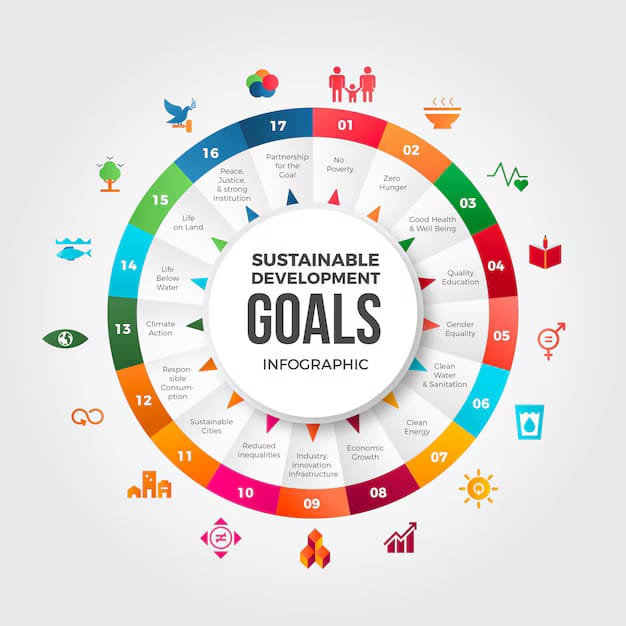
Multi-Stakeholder and Public-Private Partnerships
SDG Goal 17 is centered on multi-stakeholder partnerships, which bring together a variety of parties to tackle difficult global issues. In order to accomplish sustainable development goals, governments, the commercial sector, academia, civil society, and international organizations collaborate in these partnerships.
Large-scale projects benefit greatly from the mobilization of resources and knowledge provided by public-private partnerships (PPPs). PPPs have significantly advanced infrastructure, healthcare, and education by fusing private-sector innovation with public support. These collaborations guarantee effective use of resources while attending to the requirements of society.
The potential of cooperation is demonstrated by multi-stakeholder projects like the Global Partnership for Sustainable Development Data. Such programs foster accountability, openness, and data-driven decision-making by combining knowledge from several sectors—all of which are critical for accomplishing the 2030 Agenda.
Trade Facilitation and Policy Coherence
In order to achieve SDG Goal 17 and promote economic growth, trade facilitation is essential. Access to international markets is made possible by fair and open trade policies, which also improve economic resilience and open doors for sustainable growth. Achieving this aim requires removing trade obstacles, streamlining customs processes, and encouraging fair trade practices.
National, regional, and global plans are guaranteed to be in line with the SDGs’ overarching goals when policies are coherent. It highlights the necessity of integrated strategies that take into account environmental, social, and economic factors. Maintaining policy consistency and encouraging international cooperation require strengthening institutional structures and encouraging transparent governance.
Case Study: Global Partnerships for Renewable Energy
The International Solar Alliance (ISA), a global collaboration to encourage the use of solar energy, is a noteworthy illustration of SDG Goal 17 in action. In order to support technology transfer, funding, and capacity-building for renewable energy initiatives, the ISA unites more than 120 member nations. In rural Africa, the installation of solar-powered irrigation systems is one example of this collaboration’s success. These technologies have decreased reliance on fossil fuels while greatly increasing agricultural yield. The ISA exemplifies the transformational power of international collaborations by encouraging cooperation between governments, the commercial sector, and civil society.
Norway’s Role in Global Partnerships
One of the best examples of a nation actively pursuing SDG Goal 17 is Norway. The country contributes a sizeable amount of its GDP to aiding poorer nations, making it a top supplier of Official Development Assistance (ODA). Norway has bolstered worldwide efforts to end poverty and advance education by collaborating with groups like the Global Partnership for Education and the United Nations Development Programme (UNDP).
Norway’s focus on technology transfer and capacity-building has been crucial in promoting sustainable development. For example, the nation has provided financial support and technical assistance for solar and wind power projects in Africa as part of its efforts to promote renewable energy. In addition to meeting energy demands, these initiatives give local communities the tools they need to take part in the green economy. Furthermore, Norway has established a standard for global governance via its dedication to accountability and openness. Norway is an example of how cooperation may advance the 2030 Agenda by actively participating in multi-stakeholder partnerships and encouraging data-driven decision-making.
Data Monitoring, Accountability, and Access to Information
A key component of monitoring progress toward SDG Goal 17 is having trustworthy data and accountability systems. Data monitoring systems give stakeholders information about how well policies and programs are working, allowing them to see weaknesses and potential areas for development. Citizens who have access to information are better equipped to hold institutions and governments responsible. Open data platforms and transparent reporting promote confidence and guarantee that initiatives are in line with sustainable development ideals. Projects like the Open Government Partnership serve as prime examples of how crucial openness is to fostering accountability and advancement.
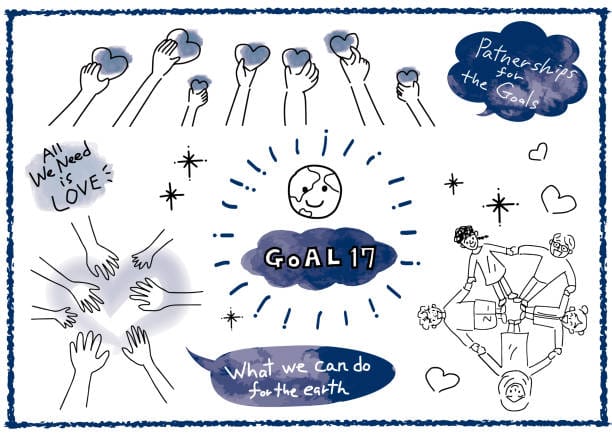
Promoting Regional Collaboration with SDG Goal 17
Initiatives for sustainable development are more effective when regional cooperation is used. Neighboring nations can tackle common issues like poverty, infrastructural deficiencies, and climate change by combining their resources and knowledge. The European Green Deal, which encourages regional initiatives to achieve environmental sustainability, is one example. By allowing nations to learn from effective tactics, cross-border sharing of best practices speeds up development. Platforms for knowledge sharing like the UN Sustainable Development Knowledge Hub make it easier to share creative solutions, which promotes cooperation and advancement on a worldwide scale.
Role of Civil Society and Official Development Assistance (ODA) Impact on SDG Goal 17
By serving as a link between local communities, the commercial sector, and governments, civil society is essential to reaching SDG Goal 17. Advocacy groups, grassroots movements, and non-governmental organizations (NGOs) put in endless effort to monitor progress, encourage accountability, and carry out sustainable development projects. By elevating the voices of underrepresented groups, civil society organizations guarantee inclusion in the processes that lead to decisions. By coordinating resources, sharing information, and promoting open government, they also promote cooperation. Civil society ensures that international collaborations are people-centered and focused on long-term sustainable development. It achieves this by participating in public awareness campaigns and policy formation.
A key component of SDG Goal 17 is Official Development Assistance (ODA), which facilitates resource mobilization for developing countries. ODA, which is supplied by developed countries and international financial institutions, supports vital sectors like infrastructure, healthcare, education, and climate resilience. It fills in gaps in domestic resource mobilization, assisting countries in reaching their sustainable development goals. However, optimizing the impact of ODA necessitates accountability and alignment with national priorities. Transparent monitoring systems guarantee that funds are used effectively, establishing trust between donor and recipient countries. Combining ODA with local capacity-building initiatives increases its efficacy, allowing countries to eventually become self-sufficient.
Debt Sustainability and Resource Efficiency
Since high debt levels can make it difficult for a country to engage in sustainable development, debt sustainability is a key component of SDG Goal 17. International financial institutions assist nations in managing their responsibilities while seeking long-term prosperity by encouraging equitable debt restructuring. In many developing countries, debt reduction programs like the Heavily Indebted Poor Countries (HIPC) program have greatly increased economic stability. Conversely, resource efficiency guarantees the best possible use of both natural and financial resources. Countries are urged to invest in sustainable infrastructure, cut waste, and embrace circular economy models. In addition to conserving resources, these actions foster economic resilience and creativity.
Strengthening Institutional Frameworks for SDG Goal 17
Debt sustainability is a key component of SDG Goal 17. Since high debt levels can make it difficult for a country to engage in sustainable development. International financial institutions assist nations in managing their responsibilities while seeking long-term prosperity by encouraging equitable debt restructuring. In many developing countries, debt reduction programs like the Heavily Indebted Poor Countries (HIPC) program have greatly increased economic stability. Conversely, resource efficiency guarantees the best possible use of both natural and financial resources. Countries are urged to invest in sustainable infrastructure, cut waste, and embrace circular economy models. In addition to conserving resources, these actions foster economic resilience and creativity.
Conclusion: The SDG Goal 17: Partnership for the Goals
The 2030 Agenda is anchored by SDG Goal 17, which highlights the value of cooperation and resource mobilization. This objective offers a thorough framework for accomplishing sustainable development by encouraging international collaborations, strengthening capacity-building, and advancing policy coherence.
SDG Goal 17’s revolutionary potential resides in its capacity to bring disparate parties together and foster synergies that propel advancement. We can create a more resilient, inclusive, and sustainable society for future generations by working together, sharing information, and coming up with creative solutions.
Read More Here





